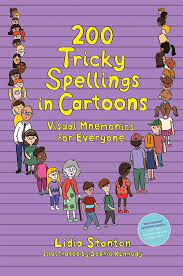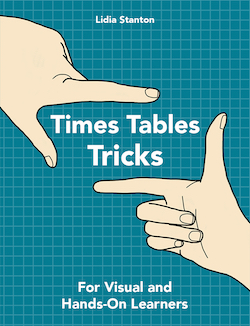Dyslexia Support
Dyslexia Support at Allenbourn Middle School
What is dyslexia?
Dyslexia is a specific learning difficulty (SpLD) where the child has consistent difficulty with information processing, primarily reading and writing skills. It does not only affect reading and writing skills but remembering information and processing information that is seen and/or heard. This can then affect literacy skills. Dyslexia can also impact organisational skills.
Children who have a profile consistent with Dyslexia can show many strengths in other areas such as creativity and visual fields.
Symptoms of Dyslexia
A child with Dyslexia may show:
- Difficulty following instructions
- Poor concentration
- They forget things
- A poor standard of written work compared with their verbal skills
- Messy work
- Different spellings for the same word
- Poor pen/pencil grip
- They find blending letters difficult
- Lose the main thread of a story or conversation
- Memory difficulties
- Use of work avoidance tactics
- They can be the 'class joker' or appear withdrawn
- Tiredness
How do we support dyslexia in school?
In school a dyslexic profile is not uncommon in the classroom. We aim to support in the following ways:
- Speak slowly, giving time to process the information
- Speak in simple sentences
- Use colour overlays
- Use signal words – ‘I need you to remember …’
- Allow thinking time before requiring an answer
- Provide visual support
- Teach reasoning skills
- Use memory hooks like pictures or stories
- Consider seating
- Ensure clear sight of the white board
- Break tasks into manageable chunks
- Use a visual task card
- Check in with the learner regularly
- Allow additional time to complete tasks
- Pre-teach texts or topic content
- Be realistic about expectations
- Use mind maps
- Explicitly teach paragraph structures
- Use writing frames and graphic organisers
- Make use of desk-top aids and assistive technology
- Word banks
- Addition and multiplication grids
- iPads or laptops for extended writing
- Text-to-speech or speech-to-text software
- Focus on content rather than spelling
- Support self-esteem
- Encourage and celebrate strengths in other curricular and non-curricular areas
- Set realistic targets
Does my child need to be on the SEN register for dyslexia?
It is not necessary for all children with a dyslexic profile to be placed onto the SEN register as all children’s needs vary. To determine whether a child should go onto the SEN register, there are two questions to ask:
Does the CYP have a learning difficulty or disability?
A child or young person has a learning difficulty or disability if:
- they have significantly greater difficulty in learning than the majority of others of the same age, or
- they have a disability which makes it difficult for them to use the facilities normally provided for others of the same age in mainstream schools or post-16 institutions.
Someone has a disability if they have a physical or mental impairment which has a substantial and long-term adverse effect on their ability to carry out day-to-day activities.
Special educational provision is any educational or training provision that is additional to, or different from, that made generally for other children or young people of the same age.
This is a wide definition, and could cover a wide range of things, for example:
having materials provided in a larger font
needing one-to-one support
communicating through sign language
needing small class sizes
In order to be classed as having SEN, they must require support with education or training which is different from that given to other children or young people of the same age.
If the answer to both of these questions is yes, then the child or young person has SEN.
Do I need more formal diagnosis for exam arrangements?
It is important to know that a diagnosis of dyslexia or other learning difficulty is not required for Access Arrangements to be put into place. There is also no guarantee of evidence for Access Arrangements being found in a dyslexia assessment. The school will gather evidence to support as everyday practice when considering access arrangements.
How can I support at home?
- Allow ‘down time’ before starting homework tasks
- Allow your child to have some control over the time homework is done. But, establish a predictable routine
- Find a quiet place and make sure pens and paper are readily available and phones are put away
- Make sure your child understands what he has to do. Talk through the task.
- When helping your child, keep your explanation as simple and practical as possible
- Be realistic
- Set a time frame for each subject. If set homework is not completed in the time allowed, send a note to school explaining how much time has been spent on a task. If your child would like to complete the task, draw a red line under the work that was done in the time allowed so that it is clear to the teacher how much time was taken to complete the whole task.
- Help your child to prioritise homework. Encourage him/her to tackle the hardest homework first
- Break it down into manageable chunks
- Encourage your child to check his/her homework after a short break
- Once homework is completed, look at the completed assignment together – each find three good things and two things that could be improved next time.
Sometimes children need an extra ‘boost’ to help them with learning. This may help them to discover more about the way they learn and strategies that can be put in place to support their difficulties. This extra support can be for a short period of time or for longer should your child need it.
A child’s self-esteem is very important. Many children who find learning difficult can get frustrated and demotivated which may lead to low self-esteem.
So, what can you do to help?
- Find out more about dyslexia and discuss it with your child. Ensure your child understands what having dyslexia means for them, as knowing there is a reason for their difference can be a turning point.
- Talk about dyslexia in a positive way
- Recognise your child’s strengths and talents and continue to engage them in the activities they enjoy and do well in.
- Really listen to your child’s concerns and work together to solve any problems.
- Provide positive feedback which focuses on your child’s approach to learning, their resilience, and their willingness to learn from mistakes.
Some texts to support with spelling, grammar and times tables at home may be useful:




